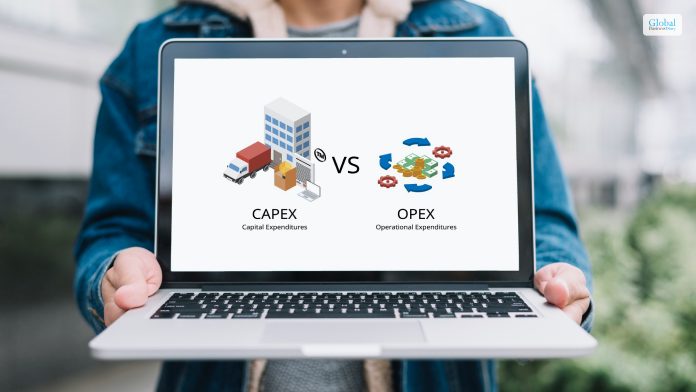8 Ways To Prepare For Your Retirement

As we all dream about the golden years of retirement, it’s crucial to remember that careful planning is the key to a worry-free and enjoyable post-work life. Did you know that the average life expectancy has reached 72 years globally, according to the World Bank?
This means people now have more time to cherish their retirement years, but it also highlights the need for a solid financial strategy to maintain a comfortable lifestyle. This article will explore nine essential steps to help you prepare for your retirement.
From crafting a budget to fine-tuning your investment portfolio, these practical tips will enable you to embrace your golden years with confidence and tranquility.
Assess Your Retirement Needs
The first step towards successful retirement planning involves getting a clear picture of your financial needs. Start by estimating your future expenses, considering essential aspects such as housing, healthcare, and recreational pursuits. Online calculators can be invaluable tools for projecting the income necessary to sustain your preferred lifestyle and helping you pinpoint ideal retirement savings wealth management goals.
By taking the time to assess your individual retirement needs, you can make informed decisions that will contribute to a secure and comfortable future, allowing you to truly enjoy your well-deserved golden years.
Invest In Tax-Free Retirement Accounts
Saving for retirement can sometimes feel overwhelming, but with the right approach, it’s easier than you think. One smart strategy is to invest in tax-free retirement accounts, which can help you boost your savings. Options like Roth IRAs offer a fantastic opportunity for your investments to flourish tax-free, ultimately enhancing your long-term gains.
By carefully selecting tax-advantaged financial instruments, you can keep a larger portion of your hard-earned wealth to relish during your retirement years. Remember, every dollar saved on taxes is a dollar that can help you enjoy the lifestyle you’ve always envisioned, so make the most of these tax-free opportunities.
Diversify Your Investment Portfolio
Building a diverse investment portfolio is essential in managing risk and enhancing returns during your journey toward retirement. By spreading your investments among different asset classes—such as stocks, bonds, and real estate—you can achieve a more balanced mix that safeguards your financial future. It’s important to regularly evaluate and fine-tune your portfolio, ensuring that it aligns with your preferred level of diversification and risk tolerance. By taking a proactive approach toward managing your investments, you’ll be better prepared to weather any financial storm.
Pay Off High-Interest Debts
Before you enter the realm of retirement, it’s vital to tackle high-interest debts that can eat away at your income and limit your ability to save and invest. Prioritize clearing credit card balances, personal loans, and other high-interest liabilities as soon as possible. By doing so, you’ll not only strengthen your financial standing but also alleviate the stress that often accompanies mounting debts.
Developing a plan to systematically pay off these obligations can help you stay on track and remain motivated. Consider strategies such as the debt avalanche method, where you focus on the debt with the highest interest rate first, or the debt snowball method, where you target the smallest debt first to build momentum.
As you head towards your well-earned retirement, being debt-free will allow you to fully enjoy your golden years without the burden of financial obligations looming over you.
Plan For Healthcare Expenses
As you look forward to your retirement years, it’s essential to consider healthcare expenses, which can often become a considerable financial burden. Start by exploring Medicare coverage options and evaluating whether you might need supplemental insurance to bridge any coverage gaps. Remember, it’s always better to be prepared than to face unforeseen medical costs without a safety net.
To further safeguard your financial well-being, consider setting up a health savings account (HSA) that allows for tax-free withdrawals to cover qualified medical expenses. By planning ahead and allocating funds for healthcare, you can have the peace of mind that you’ll be well-equipped to handle any health-related expenses during your retirement.
Maximize Social Security Benefits
Optimizing your social security benefits is a crucial aspect of retirement planning, as it can make a substantial difference in your overall income during your golden years. By delaying your benefits until you reach full retirement age or even later, you can secure higher monthly payments, providing you with a more stable financial foundation.
When determining the best time to claim your benefits, take into account factors such as your health, life expectancy, and financial requirements. Weighing these considerations carefully will help you make an informed decision that aligns with your unique circumstances and long-term goals.
Maintain An Emergency Fund
Establishing an emergency fund is an invaluable way to ensure financial stability during your retirement years. Strive to accumulate a reserve equal to three to six months’ worth of living expenses, stored in a liquid account that’s easily accessible when needed. This safety net will enable you to address unforeseen expenses, such as home maintenance or medical bills, without tapping into your retirement savings.
By building and maintaining this emergency fund, you’ll have the peace of mind that comes with knowing you’re prepared for life’s unexpected twists and turns. This financial cushion can help you weather any financial storm and preserve your hard-earned retirement nest egg, allowing you to fully enjoy your golden years with confidence and serenity.
Stay Informed And Adapt
Remember, retirement planning is a dynamic process that demands continuous attention and fine-tuning. Staying informed about changes in tax regulations, new investment opportunities, and economic shifts is essential to maintaining a successful retirement strategy. Regularly reassess your plan, taking into account any relevant developments, and make the necessary adjustments to stay on course for a secure and rewarding retirement.
By adopting a proactive approach and adapting to the ever-changing financial landscape, you’ll be better equipped to handle any challenges that may arise. This ongoing vigilance will help you preserve your financial well-being and ensure that your retirement years are as enjoyable and fulfilling as you’ve always imagined.
Conclusion
Embracing these eight practical steps will pave the way for a financially secure and fulfilling retirement. As you embark on this exciting new chapter in your life, you can do so with confidence, knowing that you’ve taken the necessary precautions to safeguard your financial future. Remember, thorough preparation is key to enjoying your golden years with the peace of mind you deserve.
Read Also:














